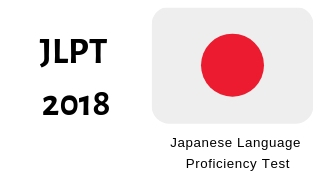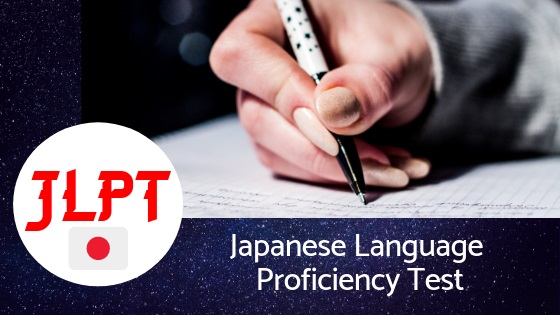You may be wondering if you should take the JLPT or not. You may think of some questions like: Are there any benefits await if I passed the test? What JLPT level should I take?
Well, the country’s most widely spoken language is Japanese, so if you want to work and live in Japan, it is significantly important to learn their language.
Learning the Japanese language creates several benefits such as more ease in getting jobs, as well as admission to colleges or universities in Japan. Besides, adjusting to the new environment will not be too challenging for you because of your capacity to communicate and understand Japanese people. However, practicing your profession in Japan will need you to have more than just a conversational level of Japanese. Whether working to huge companies or practicing as a medical professional in hospitals requires higher or “business-level” Japanese. In such cases, taking N1 or N2 of JLPT is a must.
Let’s understand first what is JLPT.
What is JLPT?
Japanese Language Proficiency Test (JLPT) is an international standardized test of Japanese language proficiency to evaluate and to certify non-native language speakers. Further, it is considered the largest-scale Japanese language test in the world. JLPT is entirely a multiple-choice exam covers language knowledge, reading ability, and listening ability. It composes of five levels: N1, N2, N3, N4, and N5, where N1 is the highest, and N5 is the lowest level.
The JLPT is scheduled twice a year in Japan and other countries, and once in some regions.
JLPT History
JLPT was first started in 1984 and continuously organized by the Japan Foundation and Japan Educational Exchanges and Services (formerly Association of International Education, Japan). It was a compulsory examination for international students who wanted to study in universities in Japan in 2003 but in the latter, it was changed to “Examination for Japanese University Admission or EJU.”
In the beginning, there were only 7,000 examinees but in 2004 it inflates to 302,198 examinees, and about 140,000 got certified. When the Japan Foundation and Japan Educational Exchanges and Services introduced a revised version of the exam in 2010 to maintain the JLPT relevancy and accuracy, there were a total of 610,000 individuals took the exam. This shows that more and more people around the globe are willing to take the Japanese language proficiency test.
Why should you take JLPT?

- JLPT N1 certification is a prerequisite for medical practitioners or Doctors to qualify for Japan’s national exams for medical practitioners, as well as some other medical professionals that have shown below.
| Dentist Nurse Pharmacist Public Health Nurse Midwife Radiology Technologist Clinical engineer Prosthetist Emergency Medical Technician |
Speech Therapist Veterinarian Dental Hygienist Dental Technician Clinical Laboratory Technician Physical Therapist Occupational Therapist Orthoptist, |

- Other universities accept the N1 certification in place of the Examination for Japanese University Admission for international students who wish to study in Japan.
- Examinees who do not have Japanese nationality will be exempted for the accreditation exam particularly on skill exams as completion of junior high school level education in Japan if they have already JLPT N1 or N2 certification.
- If you want to enter Japan under Technical Intern Trainee or specified skills visa, at least JLPT N4 is a must.
- Gain points for Preferential Treatment for Immigration System for Highly Skilled Foreign Professionals in Japan. JLPT N1 is equivalent to 15 points while N2 can gain 10 points.
- It would be much easier to get part-time jobs in Japan. If you have JLPT certifications apply for the in-demand part-time jobs in Tokyo now. Check it here.
- It would be easier for you to communicate with the locals, read directions, labels and even, find friends in Japan if you’re a JLPT passer.
JLPT Levels
N1 |
The ability to understand Japanese used in a variety of circumstances. Reading
Listening
|
N2 |
The ability to understand Japanese used in everyday situations, and in a variety of circumstances to a certain degree. Reading
Listening
|
N3 |
The ability to understand Japanese used in everyday situations to a certain degree. Reading
Listening
|
N4 |
The ability to understand basic Japanese. Reading
Listening
|
N5 |
The ability to understand some basic Japanese. Reading
Listening
|
*Data based from https://www.jlpt.jp/e/about/levelsummary.html
Application Process

JLPT can be taken during the months of July and December each year. But in other countries outside Japan, the schedule varies. You can either apply via the internet or mail, whichever is more convenient for you.
For applicants via the internet:

- Register at MyJLPT and create an ID. Do not forget your ID nor the password you created for it.
- Log in to your MyJLPT and apply.
- Pay the JLPT fee. You can choose different ways to pay. You may pay through credit card, bank transfer, or at the nearest convenience store.
- Your application is complete. You will be issued an acceptance number. Don’t forget to keep that as your reference.
For applicants via mail:

- Buy an Application Guide from the bookstore. You can find it in major bookstores in Japan.
- Fill in the application form. Please answer and fill in the forms correctly and avoid mistakes.
- Pay test fee. Unlike applications via the internet, you can only pay through Japan Post Bank or at the post office.
- Mail your application form by registered mail at the post office.
- Congratulations, your application is complete.
Applicants abroad who wish to take the test in Japan find it easier to apply via the internet. Months before the test, application guides are sold at major bookstores in different places in Japan, priced 500 Yen each. But remember that only a Japan registered address and phone number are accepted. Because of this, you can ask your family or your friend in advance to apply on your behalf there in Japan.
But if you wish to apply for JLPT in your home country, make sure that you have checked and contacted the accredited or host institution for further guidance and instructions. Just remember the principle to be followed, you can only take the test in the same place or country where you applied. If you applied in your home country, you cannot take the test in Japan, or vice versa.
After the application, a test voucher will be sent to you weeks before the day of your test. Applicants by mail can inquire about it at the Application Center, while online applicants can verify through their MyJLPT account. Once your voucher has arrived, check if everything in it is correct. If you find something that needs to be corrected, please contact the Application Center.
Wait, there’s more!
You can apply as a group, too! A group representative can register and apply a group of 10 or more applicants at once for the JLPT. You can do the registration in these ways:
Via the internet:
- Block registration by the group representative. The group representative registers and pays for all applicants.
- Block registration by grouping individual applicants. Each applicant registers to MyJLPT individually but the group representative pays for all applicants at once. For this, the group representative should register at MyJLPT as a group registration.
Via mail:
- Each applicant must have bought and filled in an Application Guide.
- The Group representative must fill in a separate group application form. The representative must fill in the form very carefully. Otherwise, applicants will not be allowed to take the test due to mistakes.
- All applicants must use one phone number and one registered address, where the test voucher will be sent.
- The Group representative pays and mails the application forms.
- Now, your group’s application is complete.
Applicants who are sick, injured or have limitations, must call the JLPT Application Center for instructions.
Taking the JLPT is an initial and important step for those who want to stay long-term in Japan. If you wish to pass the JLPT to obtain an N1 or N2 or other level certification requires you to learn Japanese thoroughly by taking up courses at one of the Japanese language schools in Japan. By doing so, we at FAIR Study in Japan will help you find the best Japanese language school and will assist you through the entire process.
If you want to learn more about our Japan Omakase Package plan, then please visit the link below.






No comments yet.